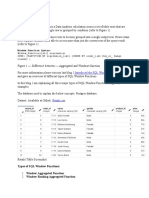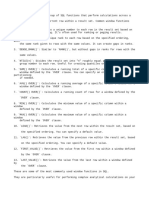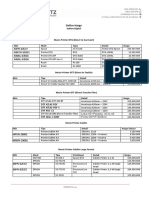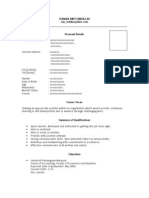0% found this document useful (0 votes)
3 views10 pages? Window Functions ?
The document provides an overview of window functions in SQL, detailing various types such as ranking, distribution, aggregate, and offset functions. It includes examples of how to use functions like ROW_NUMBER(), RANK(), SUM(), and LAG() within SQL queries to perform calculations across related rows without grouping them. Additionally, it explains the use of aggregate functions as window functions for running totals and moving averages.
Uploaded by
anjummelappilly06Copyright
© © All Rights Reserved
We take content rights seriously. If you suspect this is your content, claim it here.
Available Formats
Download as PDF, TXT or read online on Scribd
0% found this document useful (0 votes)
3 views10 pages? Window Functions ?
The document provides an overview of window functions in SQL, detailing various types such as ranking, distribution, aggregate, and offset functions. It includes examples of how to use functions like ROW_NUMBER(), RANK(), SUM(), and LAG() within SQL queries to perform calculations across related rows without grouping them. Additionally, it explains the use of aggregate functions as window functions for running totals and moving averages.
Uploaded by
anjummelappilly06Copyright
© © All Rights Reserved
We take content rights seriously. If you suspect this is your content, claim it here.
Available Formats
Download as PDF, TXT or read online on Scribd
/ 10
























































































